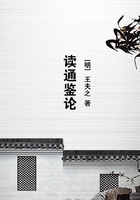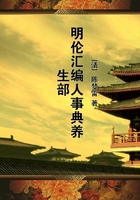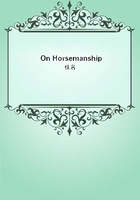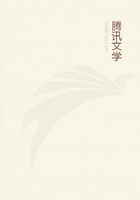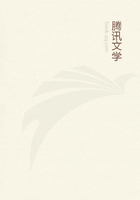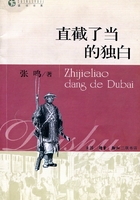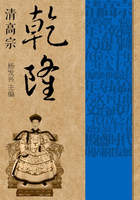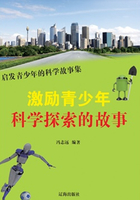This double current of feeling is also recognizable in the 'Dittamondo'
of Fazio degli Uberti, composed about the year 1360--a description of visionary travels, in which the author is accompanied by the old geographer Solinus, as Dante was by Virgil.They visit Bari in memory of St.Nicholas, and Monte Gargano of the archangel Michael, and in Rome the legends of Aracoeli and of Santa Maria in Trastevere are mentioned.Still, the pagan splendor of ancient Rome unmistakably exercises a greater charm upon them.A venerable matron in torn garments--Rome herself is meant--tells them of the glorious past, and gives them a minute description of the old triumphs; she then leads the strangers through the city, and points out to them the seven hills and many of the chief ruins--'che comprender potrai, quanto fui bella.'
Unfortunately this Rome of the schismatic and Avignonese popes was no longer, in respect of classical remains, what it had been some generations earlier.The destruction of 140 fortified houses of the Roman nobles by the senator Brancaleone in 1257 must have wholly altered the character of the most important buildings then standing:
for the nobles had no doubt ensconced themselves in the loftiest and best-preserved of the ruins.Nevertheless, far more was left than we now find, and probably many of the remains had still their marble incrustation, their pillared entrances, and their other ornaments, where we now see nothing but the skeleton of brickwork.In this state of things, the first beginnings of a topographical study of the old city were made.
In Poggio's walks through Rome the study of the remains themselves is for the first time more intimately combined with that of the ancient authors and inscriptions--the latter he sought out from among all the vegetation in which they were imbedded--the writer's imagination is severely restrained, and the memories of Christian Rome carefully excluded.The only pity is that Poggio's work was not fuller and was not illustrated with sketches.Far more was left in his time than was found by Raphael eighty years later.He saw the tomb of Caecilia Metella and the columns in front of one of the temples on the slope of the Capitol, first in full preservation, and then afterwards half destroyed, owing to that unfortunate quality which marble possesses of being easily burnt into lime.A vast colonnade near the Minerva fell piecemeal a victim to the same fate.A witness in the year 1443 tells us that this manufacture of lime still went on: 'which is a shame, for the new buildings are pitiful, and the beauty of Rome is in its ruins.'
The inhabitants of that day, in their peasant's cloaks and boots, looked to foreigners like cowherds; and in fact the cattle were pastured in the city up to the Banchi.The only social gatherings were the services at church, on which occasion it was possible also to get a sight of the beautiful women.
In the last years of Eugenius IV (d.1447) Biondus of Forli wrote his 'Roma Instaurata,' making use of Frontinus and of the old 'Libri Regionali,' as well as, it seems, of Anastasius.His object is not only the description of what existed, but still more the recovery of what was lost.In accordance with the dedication to the Pope, he consoles himself for the general ruin by the thought of the precious relics of the saints in which Rome was so rich.
With Nicholas V (1447-1455) that new monumental spirit which was distinctive of the age of the Renaissance appeared on the papal throne.
The new passion for embellishing the city brought with it on the one hand a fresh danger for the ruins, on the other a respect for them, as forming one of Rome's claims to distinction.Pius II was wholly possessed by antiquarian enthusiasm, and if he speaks little of the antiquities of Rome, he closely studied those of all other parts of Italy, and was the first to know and describe accurately the remains which abounded in the districts for miles around the capital.It is true that, both as priest and cosmographer, he was interested alike in classical and Christian monuments and in the marvels of nature.Or was he doing violence to himself when he wrote that Nola was more highly honoured by the memory of St.Paulinus than by all its classical reminiscences and by the heroic struggle of Marcellus? Not, indeed, that his faith in relics was assumed; but his mind was evidently rather disposed to an inquiring interest in nature and antiquity, to a zeal for monumental works, to a keen and delicate observation of human life.
In the last years of his Papacy, afflicted with the gout and yet in the most cheerful mood, he was borne in his litter over hill and dale to Tusculum, Alba, Tibur, Ostia, Falerii, and Otriculum, and whatever he saw he noted down.He followed the Roman roads and aqueducts, and tried to fix the boundaries of the old tribes which had dwelt round the city.
On an excursion to Tivoli with the great Federigo of Urbino the time was happily spent in talk on the military system of the ancients, and particularly on the Trojan war.Even on his journey to the Congress of Mantua (1459) he searched, though unsuccessfully, for the labyrinth of Clusium mentioned by Pliny, and visited the so-called villa of Virgil on the Mincio.That such a Pope should demand a classical Latin style from his abbreviators, is no more than might be expected.It was he who, in the war with Naples, granted an amnesty to the men of Arpinum, as countrymen of Cicero and Marius, after whom many of them were named.
It was to him alone, as both judge and patron, that Blondus could dedicate his 'Roma Triumphans,' the first great attempt at a complete exposition of Roman antiquity.

